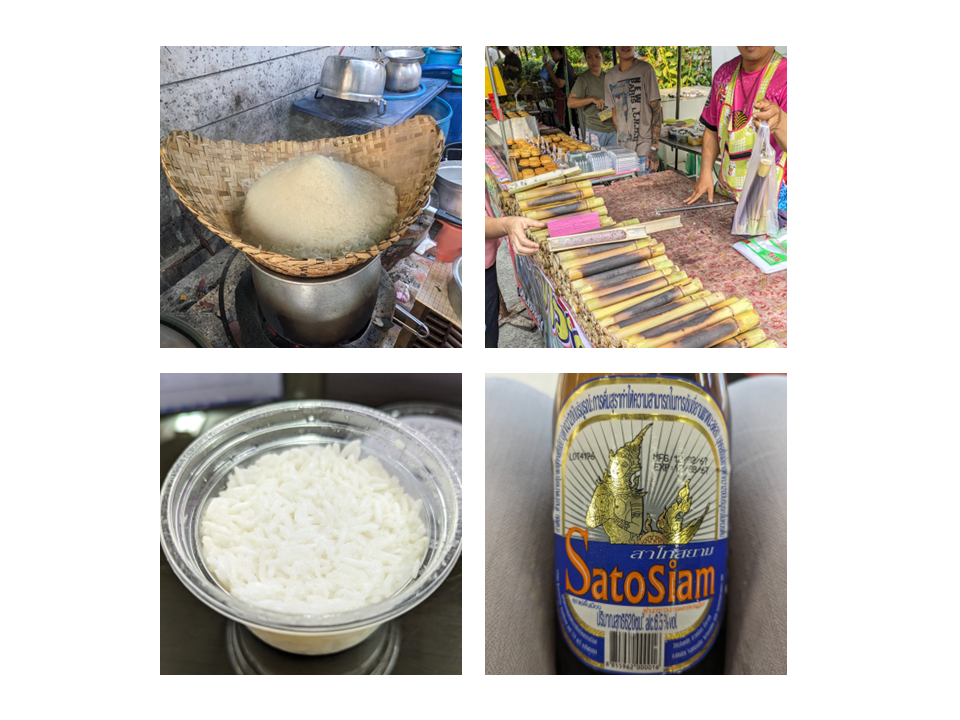Pick Up
1041. Southeast Asia Liaison Office News: Thailand's Diverse Rice Food Culture

1041. Thailand's Diverse Rice Food Culture
June 18 is Sustainable Gastronomy Day. From Bangkok, where the Southeast Asia liaison base is located, we will introduce the diverse rice food culture of Thailand.
Thailand, one of the world's leading producers and consumers of rice, takes advantage of the warm climate with an average annual temperature of 28°C to grow rice throughout the year. In 2022, Thailand's rice production was 34.31 million tons, ranking sixth in the world, and its rice exports (based on polished white rice) were 7.68 million tons, second only to India (FAOSTAT).
In Thailand, indica rice production is the mainstream, which is less sticky and flippery than Japan rice. Just as there is high-quality rice in Japan, Thailand also has the finest fragrant rice called jasmine rice, which gives off a fragrant aroma when cooked.
Incidentally, JIRCAS has been conducting research on the aroma components of Thai rice in the past.
https://www.jircas.go.jp/ja/publication/research_results/2002_16
In Thailand, not only indica rice but also glutinous rice is often eaten.
Thai glutinous rice「Khao Niao」
Khao Niao is a cute name, but " Khao " means rice and " Niao " means sticky. In Thailand, the local cuisine of the northeastern part of the country called "Isan cuisine" is delicious, but glutinous rice is indispensable for Isan cuisine. Freshly cooked glutinous rice served in a small cylindrical mesh basket has a "glutinous" texture that enhances the flavor of Thai cuisine. At the restaurant, you can pick up a bite of sticky rice with your hands and eat it with “Kai Yang” (Thai-style grilled chicken) and “Som Tam” (green papaya salad). In addition, you can sometimes see steaming glutinous rice in baskets at food stalls in the city.
Glutinous rice dessert
Thailand is rich in fruits, and tropical fruits such as mango, guava, jackfruit, and lychee are available in “Khao Niao Mamuang”, which is a cut mango served with steamed glutinous rice and condensed coconut milk, is one of Thailand's most popular sweets. By the way, this dessert won the third place in the "10 most rated puddings in the world" by the cooking information media TasteAtlas.
There is also “Khao Lam” a traditional snack made by steaming sticky rice and coconut milk in a bamboo tube. The sweetness is modest, just a little sweet, so I like to eat it with a light sprinkle of salt like red rice.
Noodles with rice
Like rice, noodle dishes are an integral part of the Thai diet. There are also noodles made from wheat flour, but rice noodles are still the mainstream. There are noodle restaurants in the city (the noodle dishes are called "Kuaitiao "). There are three types of rice noodles (Senmi: thin noodles , Senlek: medium-thick noodles, and Senyai: flat thick noodles) that you can choose when ordering. In addition, you can choose cooking methods such as soup, no soup, stir-fry, and toppings, and finish the dish to your liking.
In Thailand, there is also “Khanom Chin or Khanom Jeen” (fermented rice noodles), which are made by fermenting rice in water and then making noodles. It looks exactly like Japan somen noodles, but the way to eat it is different, and it is eaten with spicy curry. In addition, the stall served khanom cin mixed with som tam.
Amazake and rice wine
Of course, there are also drinks made with rice. It is similar to amazake in Japan and has a "Khao Maak". This is made by sprinkling steamed mochi rice with koji mold and saccharifying it at room temperature. Rather than a liquid like amazake, most of the prototype of the rice grain remains, and the sweet juice accumulates underneath.
If you put this Khao Maak in a jar and ferment it further, it becomes a rice wine called "Sato". It was sold at the airport, so I drank it, and it was a slightly sweet sake with a slight acidity (6.5% alcohol). On the Internet, it is described as tasting like white wine, and although it is less acidic than wine, it may indeed be closer to a slightly sweeter white wine. Or, I drank it while thinking that if I filtered the makgeolli and made it transparent, it might look like this. It doesn't have a very good reputation online, but I like it quite a bit.
This time, as it was "Sustainable Food Culture Day", we introduced the rice food culture of Thailand from the Southeast Asia Liaison Center. We plan to continue to provide a variety of information on Southeast Asia.
801. Sustainable Gastronomy “Sustainable Food Culture”
https://www.jircas.go.jp/ja/program/proc/blog/20230619
Contributor, KANAMORI Norihito, Southeast Asia Liaison Office
